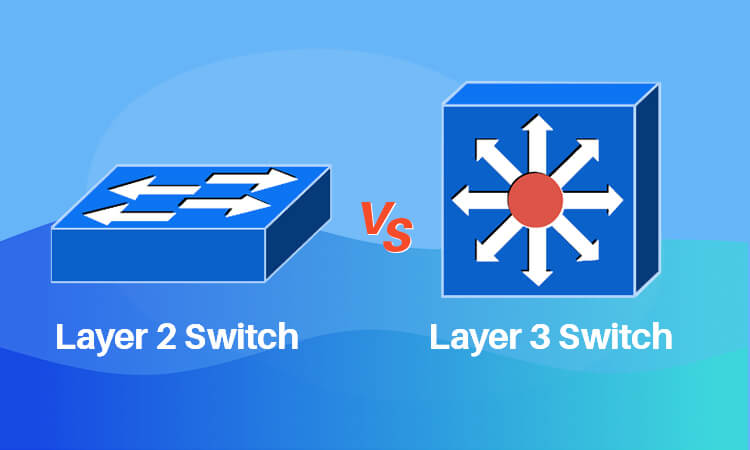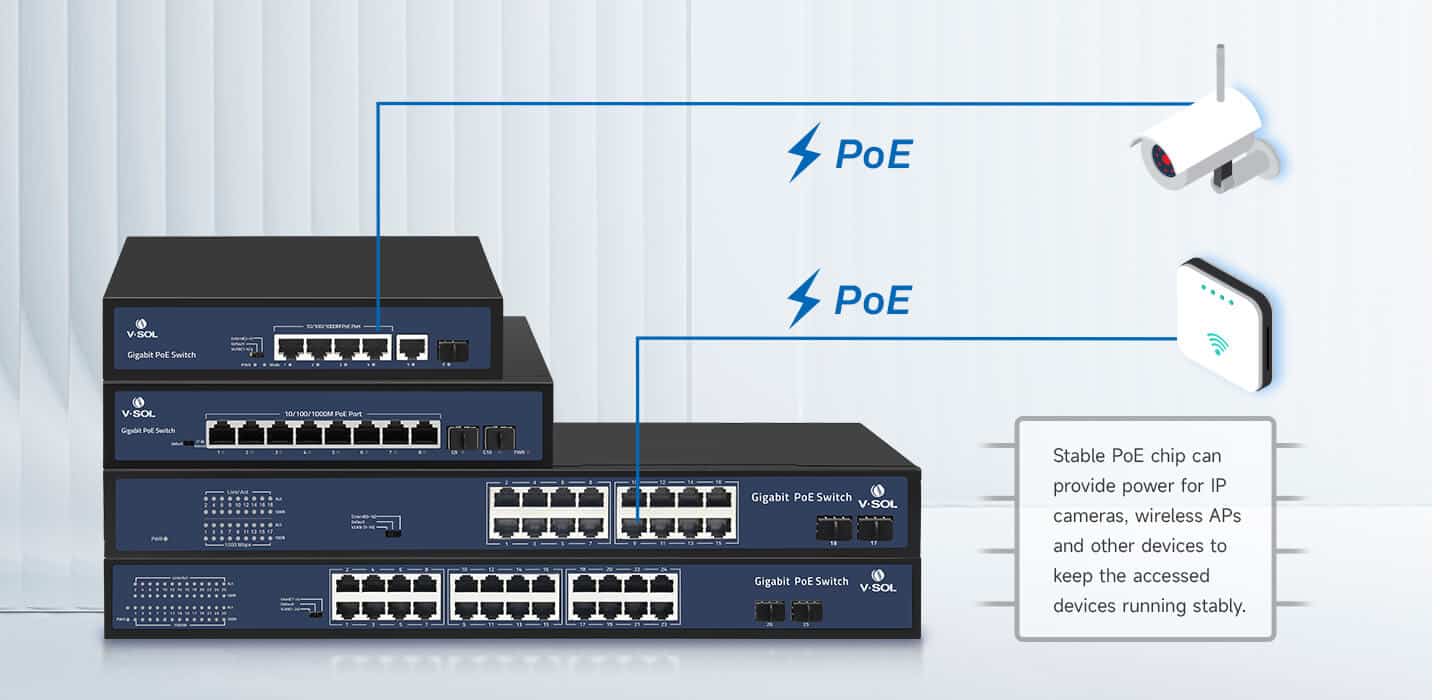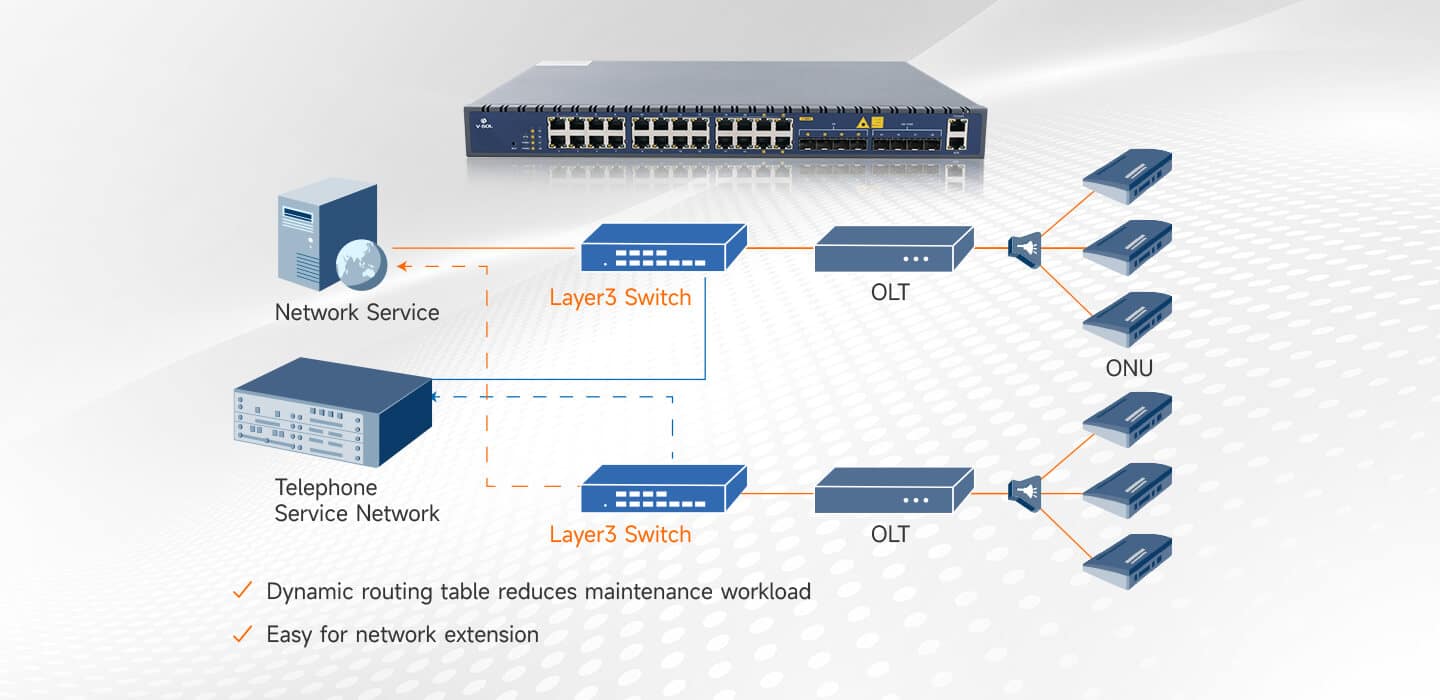Ethernet switch can access all kinds of terminal devices, set up LANs and achieve direct communications among all equipment. With the development of the network, different switches are put into application.
According to the OSI or TCP/IP model, the Layer 2 switch works on the data link layer, while the Layer 3 switch works on the network layer. What’s the detailed difference between the Layer 2 and Layer 3 switch?

Part I. What Is Layer 2/Layer 3 Ethernet Switch?
Layer 2 switch works on the second layer of the data link layer. It’s capable of identifying the MAC address of the data frame, transmitting according to MAC address, and recording these MAC addresses and corresponding ports into the inside addresses table.
Layer 3 switch has a part of routing features, functioning on the network layer of OSI. It aims to speed up the data exchange in large LANs. The routing can achieve multiple transmissions with routing once.
Part II. Layer 2 vs Layer 3 Switch, What’s the Difference?
1. Functioning Layer
Layer 2 switches work at the data link layer, and Layer 3 switches work at the network layer. Layer 3 switches not only achieve high-speed forwarding of data packets but also achieve optimal network performance according to different network conditions.
2. Working Principle
The theory of a layer 2 switch is that when the switch receives a data packet from a certain port, it will first read the source MAC address in the packet, then read the destination MAC address in the packet, and look up the corresponding port in the address table. , if there is a port corresponding to the destination MAC address in the table, copy the data packet directly to this port.
The theory of the Layer 3 switch is relatively simple, that is, one route is exchanged multiple times. Generally speaking, it is the first source-to-destination route. Source to destination can be exchanged quickly.
3. Function
The Layer 2 switch is based on MAC address access, only forwards data, and cannot be configured with an IP address.
The Layer 3 switch combines the Layer 2 switching technology with the Layer 3 forwarding function, which means that the Layer 3 switch is based on the Layer 2 switch. The routing function is added to the above, and the IP addresses of different VLANs can be configured, and the communication between VLANs can be realized through three-layer routing.
4. Application
Layer 2 switches are mainly used at the network access layer and aggregation layer, while Layer 3 switches are mainly used at the core layer of the network, but there are also a few Layer 3 switches used at the aggregation layer. The following figure shows the practical application example of Layer 3 switches.
5. Protocol
Layer 2 switches support physical layer and data link layer protocols, such as Ethernet switches and Layer 2 switches, this hub has similar functions.
The Layer 3 switches support the physical layer, data link layer, and network-layer protocols.
| Items | Layer 2 Switch | Layer 3 Switch |
| Layer | Data Layer(Layer 2) | Network Layer(Layer 3) |
| Function | Switching | Switching+Routing |
| Advantages | Cheap, Convenient | Abundant functions |
| Disadvantages | Easy to cause the network storm on the same LAN | Much more expensive; Require more expertise to manage |
Part III. Application of VSOL Layer 2 and Layer 3 Switch
1. Layer 2 Ethernet PoE Switch
VSOL Layer 2 switch can be classified into two types: Ethernet switch with or without PoE function.
As shown in the below application diagram, the Layer 2 PoE switch can supply power for the IP camera, wireless AP, Internet voice call, IPhones, etc, in the public zone via the cable connecting to the RJ45 ports.
If there are many scenarios, multiple switches can be stacked to use. The Layer2 switches mainly access the data and then the Layer 3 Ethernet switch at the core layer will converge and manage the data.

2. Layer 3 Managed Ethernet Switch: Highway Tunnel Solutions
The below image demonstrates the application of the VSOL Layer 3 Ethernet switch.
The OLT is responsible for accessing and converging data. After it delivers the data to the Ethernet switch, the switch will send the data to the router the channel through which data of LAN and WAN flows in and out.
Thus, the managed switch downlink connects to OLT and the uplink connects to management equipment like video storage server, large screen surveillance, emergency telephone, etc.

Features of Layer 3 Managed Switch V3500-28X:
✔ 24GE ports: Provide 24 10/100/1000M auto-negotiation RJ ports. The limit of the full-duplex rate reaches 2000Mbps.
✔ Great performance: End-to-end data can be transmitted at non-blocking full wire speed.
✔ StackWise: Multiple switches can be combined into one, which is good for redundancy backup, link aggregation, the increase of ports and bandwidth, and the improvement of processing capability.
✔ SNMP/Web/CLI/SSH
✔ 3-Layer routing including RIP/OSPF/BGP
✔ Classification of VLAN and Firewall
In addition to V3500-28X, the VSOL Ethernet switch V3500-25G also supports Layer 3 switch routing protocols. The V3500 series Ethernet switches are designed to provide flexible full-gigabit access with 10 Gigabit uplink ports, higher performance, and richer service processing capabilities.

All in all, the Layer 2 switch is mainly responsible for accessing the data, while the Layer 3 switch is more multifunctional. It collects all data and can manage the devices.
Both Layer 2 and Layer 3 switches are widely applied in the Internet, video surveillance, security protection and other circumstances in schools, hotels, cooperate parks and commercial buildings.